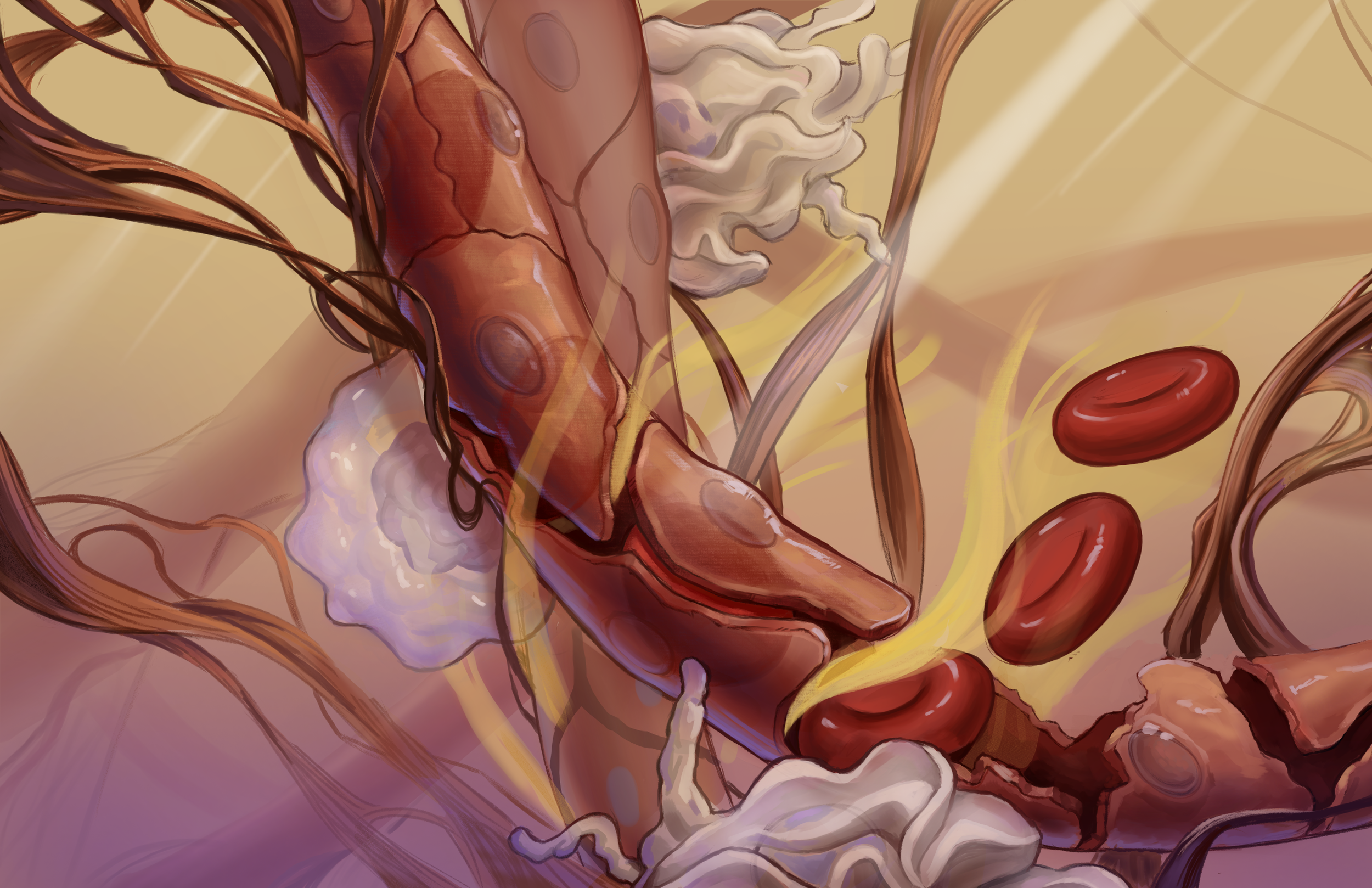A Design Process Walkthrough
-Featuring my Tuberculosis Illustration-
What was the project?
Let’s walk through the illustration process together, focusing on the medicine!
An infographic describing some of the hallmark stages of development found in pulmonary tuberculosis: the form of tuberculosis takes when it infects the lungs. As depicted, dormant, or “sleeping”, TB can be found within granulomas in the lungs.
Once activated, TB-disease ensues, which may progress to varying levels of severity. In severe TB, large cavities and brachial erosion can be found amongst the granulomatous inflammation in the lungs.
Key Project Skills:
Medical Illustration
Graphic Design
Infographic Design
General Education
Character Design
Tools:
Adobe Illustrator, Clip Studio Paint
Target Audience :
General Audience with an interest in science and medicine.
Client :
Johnson & Johnson (J&J), Association of Medical Illustrators (AMI). To be featured on the Illustrate Change website.

Early sketches and placeholder text are used to rough out an approximate layout of the illustration. During this drafting, I focus on:
Visual Narrative: how design elements in the illustration (text, art, etc.) flow from one to another to tell a story and communicate information.
Medical Content: what medical information needs to be illustrated in order to tell our story. Questions such as—what is being drawn, and from what angle? How detailed does it need to be?—are all important.
A lot of research goes into planning and eventually fully rendering a medical illustration. A lot of this is done at the beginning in order to start from a solid foundation of medical knowledge, but will often continue over the course of the project as it evolves.
I take a diverse collection of references from different sources to construct the medical anatomy. This includes real life photographic references from surgeries or dissections, other anatomical illustrations, and models of the anatomical structures, such as DICOM data from medical imaging technology.
Photographic reference
Other anatomical Illustrations
2) Iterate
We iterate on our illustration by identifying problems that exist in the first draft and trying new solutions based on feedback from outside sources as well as my own improved understanding of both the subject matter and the needs of the project.
For the next iteration of tuberculosis illustration, I decided to shrink the character portrait to create room for more medical art. I removed the lungs from the portrait and upscaled them, so that they took more of the center stage of the piece and could accommodate more detail. I make one lung larger than the other so their is a hierarchy between them; and plan to use the larger lung for a more advanced stage of disease progression.
Another major instance of iterative development in this piece can be found within the depiction of the tuberculosis granuloma.
The granuloma was initially envisioned as being much more iconographic. The evolution of the granuloma’s depiction is reflective of an improved understanding of the demands of the project, and of the medical subject matter at hand.
First Granuloma Draft
Final Granuloma Design
With better reference and more research, I was able to better appreciate how the structure of the granuloma is related to both the immune response of the body and the pathogenesis of the TB bacteria. It was clear to me that too much of the “story”, of a TB infection, was lost with the first illustration. From here, I decided both to make the illustration larger, and also zoom in so that individual body cells can be seen enacting their role in granuloma formation.
1) Research and Sketch

Each iteration brings us closer to the final project! Nearing the end of the project, is an excellent time for small adjustments (such as the spacing of objects, the size of font, etc.)
As with any creative project, large changes are easier to make at the beginning rather than near the end. As such, it’s especially important in medical illustration to solve major visual challenges and assure accuracy of medical content as early as possible.




